Recent Articles
Popular Makes
Body Types
10 Best Used SUVs Under $15,000
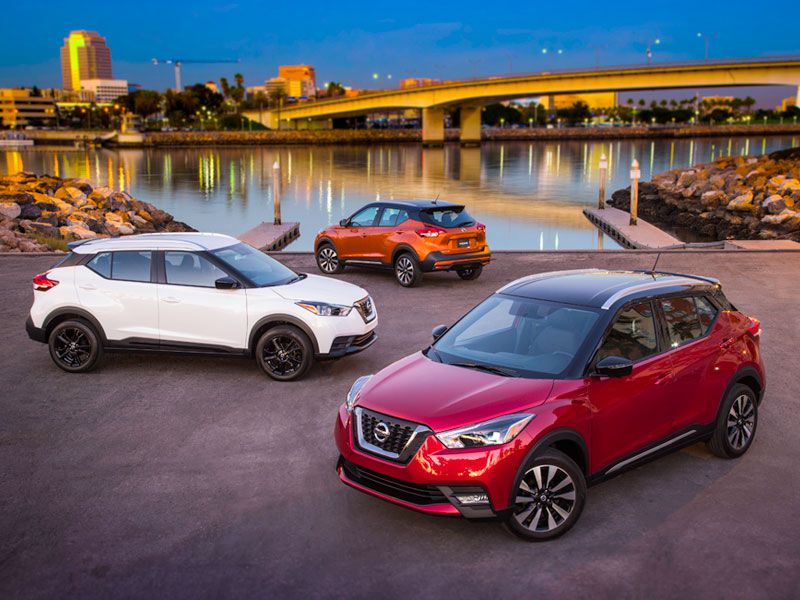
2018 Nissan KICKS exterior lineup ・ Photo by Nissan
You say you need the cargo versatility and flexibility of a sport/utility vehicle, but don’t have a lot of money to spend? There’s an easy solution for that. Simply expand your search to include well-maintained used SUVs, and you’ll find tons of great buys.
Listed in alphabetical order on the pages that follow are our picks for the 10 best used SUVs for under $15,000. They’re all less than 10 years old and easy to find beneath the price cap with fewer than 50,000 miles on the odometer. We chose vehicles that have a great reputation for reliability and good safety scores, and because they’re utility vehicles, nearly all can be found equipped with all-wheel drive. No, you won’t find any luxury SUVs on this list, or large models with V8 engines that are good for towing. That’s because you’d have to pay more than $15,000 for those, or you’d have to settle for older models with higher miles on the clock that are likely to be less reliable. What you will find on this list are useful conveyances that won’t drain your bank account and will likely serve you well for years to come.
Buick Encore (2017-2018)
Buick’s subcompact utility vehicle might be tiny, but it will surprise you with its classy design details, upscale interior materials, and quiet yet communicative driving dynamics. The standard turbocharged engine is surprisingly satisfying, too, a 1.4-liter four-cylinder good for 138 to 153 horsepower, depending on the version.
Like a big-city skyscraper, the Encore builds up rather than out. Four people are reasonably comfortable, and when you open the rear hatch you’ll find 18.8 cubic feet behind the rear seat. Fold it down, and you’ve 48.4 cubic feet. The front passenger’s seat even folds in half so that longer items will fit. In crash tests, the National Highway Traffic Safety Administration (NHTSA) gives the Encore a five-star overall rating, while the Insurance Institute for Highway Safety (IIHS) deems it worthy of Good scores in most assessments.
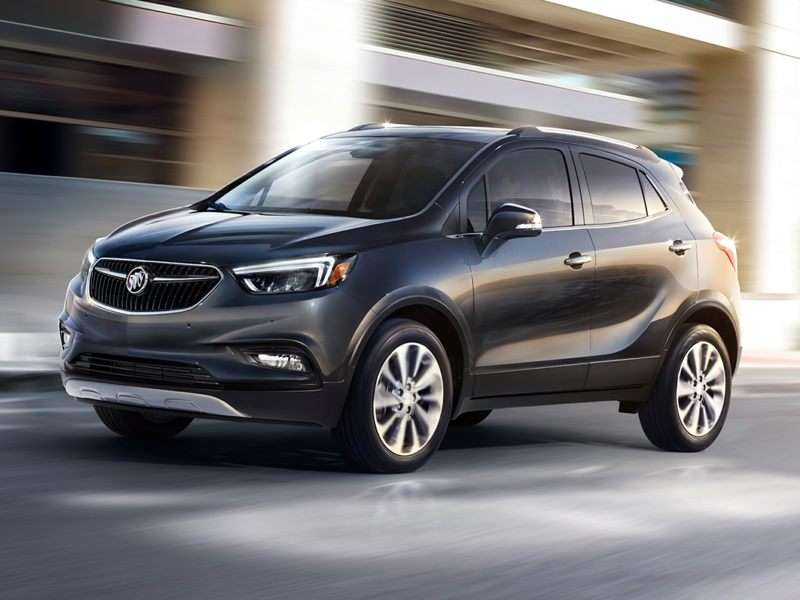
Photo by Buick
Chevrolet Equinox (2014-2017)
Chevy’s second-generation Equinox is among a handful of small suvs that offer a V6 as an engine choice, giving it a tow rating of 3,500 pounds. Most examples will have the standard 182-hp 2.4-liter four-cylinder, but if you find the 301-hp 3.6-liter V6 in an Equinox, know that it supplies plenty of power. Both engines come with a six-speed automatic transmission.
Additionally, the Equinox may be equipped with even more unique features, such as a dual-screen rear entertainment system, connected services with a Wi-Fi hotspot, and 19-inch aluminum wheels. But no matter which Equinox you get, you’ll enjoy a good amount of space for people and cargo. Open the hatch to access 31.4 cubic feet of space behind the rear seat. Fold it down to maximize cargo capacity at 63.7 cubic feet. If you don’t like the looks of the Chevy but you do like everything else, find yourself a GMC Terrain. It’s basically the same thing but with a boxier design. Both models get a four-star rating from the NHTSA and Good designations across the board from the IIHS.

Photo by Chevrolet Media
Honda CR-V (2012-2016)
Like a faithful friend, the Honda CR-V is ever-dependable and helps out whenever you need it. The fourth generation of this compact SUV was especially good, with its generous cargo space and pleasant driving dynamics.
Available in LX, EX, and EX-L trim, every 2012-2016 CR-V had a 185-horsepower 2.4-liter four-cylinder engine. For 2015, Honda swapped out the five-speed automatic transmission for a continuously variable transmission (CVT) and boosted torque output from 163 lb-ft to 181 lb-ft. It’s not easy to find a low-mileage CR-V of this vintage, especially for less than $15,000. Credit its top-notch safety and reliability records, along with the big cargo capacity of 37.2 cubic feet with the rear seats in use and 70.9 cubic feet when they're folded down. But when you do, and the deal checks out, you should grab this SUV while you can.
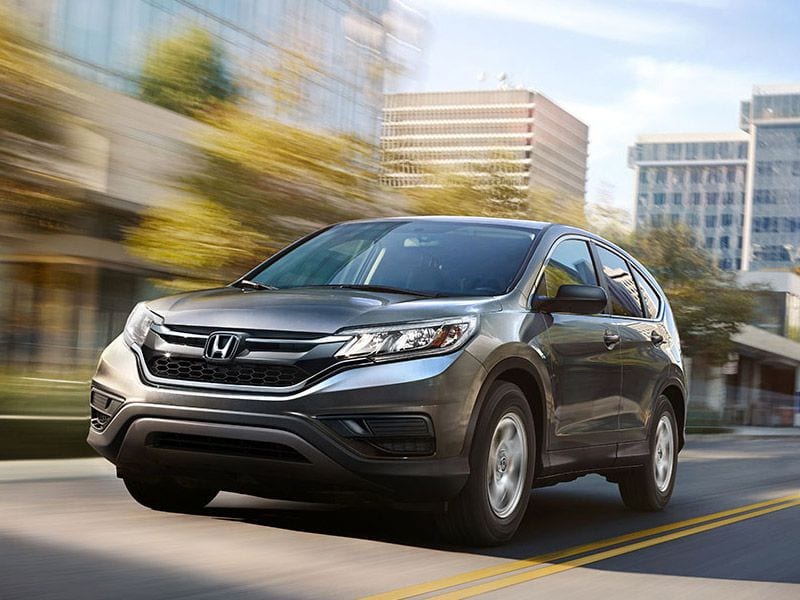
Photo by Honda
Hyundai Kona (2018-2019)
Hyundai may have designed the subcompact Kona to appeal to people who prefer the quirky over the mainstream, but there’s no denying that this plucky little SUV is full of value and enjoyable to drive. And with a starting price of under $20,000 brand-new, it should be easy to find slightly used versions for under $15,000.
Four trim levels are available: the SE, SEL, Limited, and Ultimate, and chances are you won’t find the two higher trims under our price cap. The SE and SEL have a 147-hp 2.0-liter four-cylinder engine with a six-speed automatic, while the Limited and Ultimate are powered by a 175-hp turbocharged 1.6-liter four-cylinder sporting a seven-speed dual-clutch automatic transmission (DCT). The Kona is small but makes good use of its interior space. Cargo volume measures 19.2 cubic feet behind the rear seats and 45.8 cubic feet with the seats folded down. Better yet, the Kona is quite safe, earning a Top Safety Pick+ designation from the IIHS. And if you find a certified pre-owned (CPO) example, it comes with Hyundai’s transferrable five-year/60,000-mile bumper-to-bumper and 10-year/100,000-mile powertrain warranty.
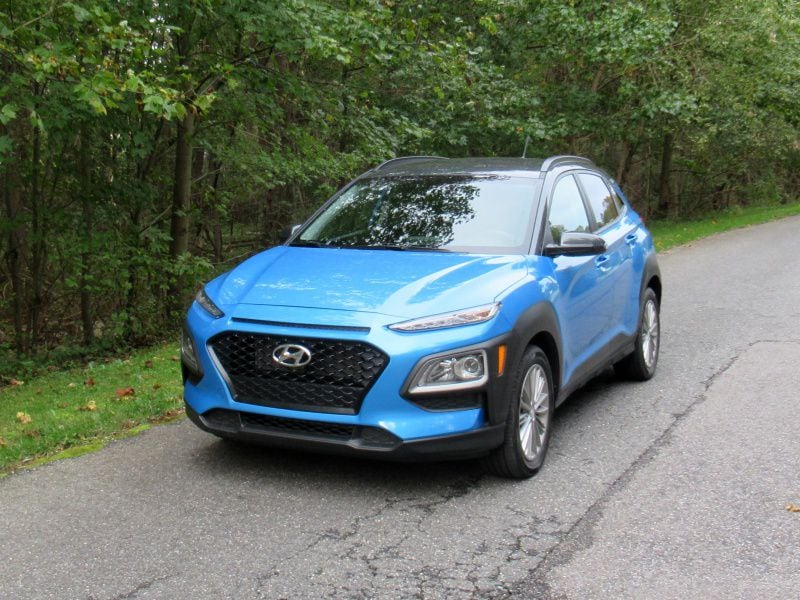
Photo by Brady Holt
Hyundai Tucson (2016-2018)
Hyundai’s compact Tucson crossover was redesigned for 2016 and was available in SE, Eco, Sport, and Limited trim levels. The base Tucson SE model came with a 2.0-liter four-cylinder making 164 hp, and employed a six-speed automatic transmission. Other trims offered a torquey and entertaining turbocharged 1.6-liter four-cylinder good for 175 hp. However, this engine came with a seven-speed DCT that many owners didn’t like — and which makes the Tucson more affordable as a used suv.
Open the rear hatch and you’ll find 31 cubic feet of cargo space behind the rear seats, and 61.9 cubic feet with the rear seats folded. The Tucson also earned a Top Safety Pick+ designation from the IIHS and a 5-star overall rating from NHTSA, meaning it does a good job of protecting you in a crash. Plus, if you go CPO, the warranty is the best in the business.
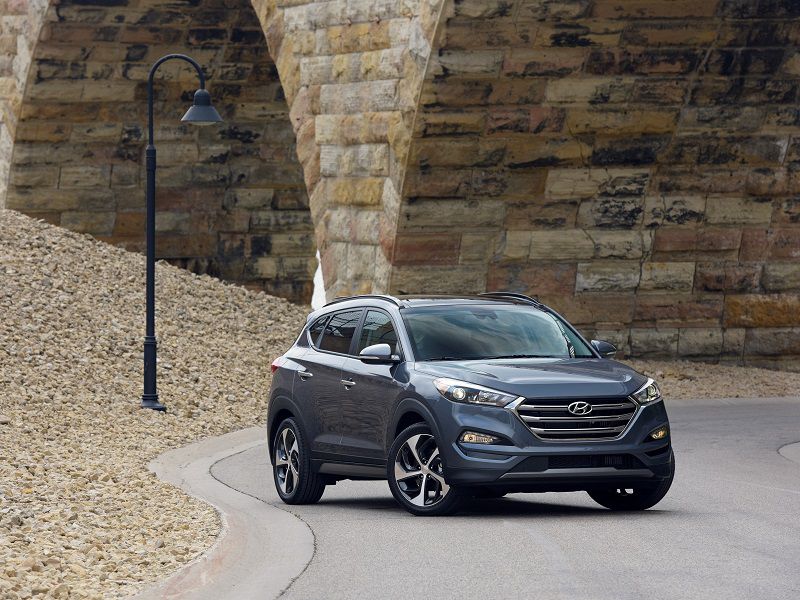
Photo by Hyundai
Hyundai Santa Fe Sport (2017-2018)
Another weapon in Hyundai’s smallish crossover arsenal is the Santa Fe Sport, which gives you a choice between a 185-hp 2.4-liter four-cylinder or a spirited 240-hp turbocharged 2.0-liter four-cylinder, each hooked up to a six-speed automatic. Available in base, 2.0T, and 2.0T Ultimate trim levels, some Santa Fe vehicles include cool features such as a panoramic sunroof and ventilated front seats. But for less than $15,000, don’t count on that.
Behind the rear seats, you’ll find 35.4 cubic feet of cargo space, while folding the rear seats will net you 71 cubic feet. That ties with the Honda CR-V for the most amount of cargo capacity on this list. And if you buy a CPO version of the Santa Fe Sport, the generous warranty coverage, along with this SUV’s good crash-test ratings, will help you sleep a little easier.
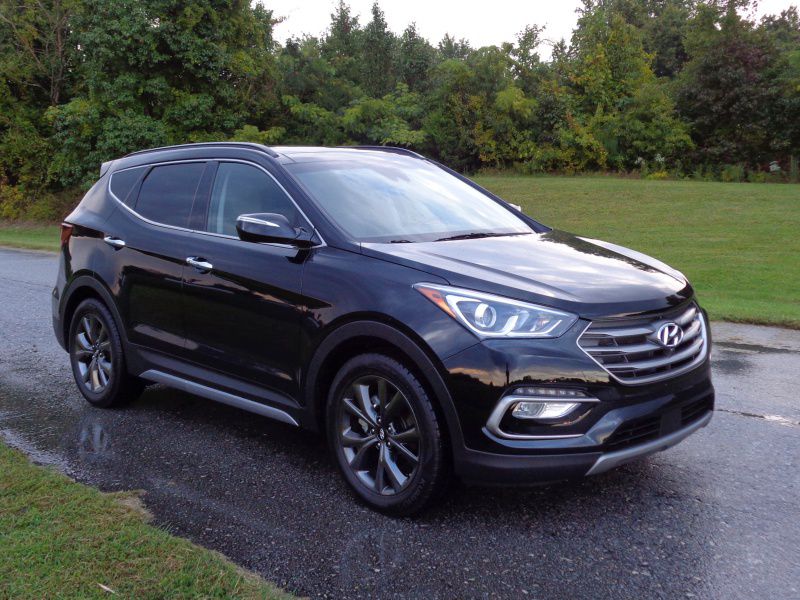
Photo by Brady Holt
Mazda CX-5 (2014-2016)
Mazda has designed some of the most attractive and pleasurable to drive crossover suvs in recent memory, so a clean, low-mileage version of the CX-5 compact model might be a rare but desirable find. If you do see one for sale for less than $15,000, scoop it up ASAP.
The CX-5 came in Sport, Touring, and Grand Touring trim levels. A 155-hp 2.0-liter four-cylinder engine came in the Sport, and you may even find an example with a six-speed manual transmission, although the six-speed automatic is much more common. Meanwhile, a 184-hp 2.5-liter four-cylinder enlivens the Touring and Grand Touring, and only came with the automatic. Following some changes for the 2014 model year, the CX-5 received excellent scores in both IIHS and NHTSA crash tests, and this Mazda is known to be an exceptionally reliable vehicle. You’ll find 34 cubic feet of cargo space behind the rear seats, and 65 cubic feet with the rear seats folded down.
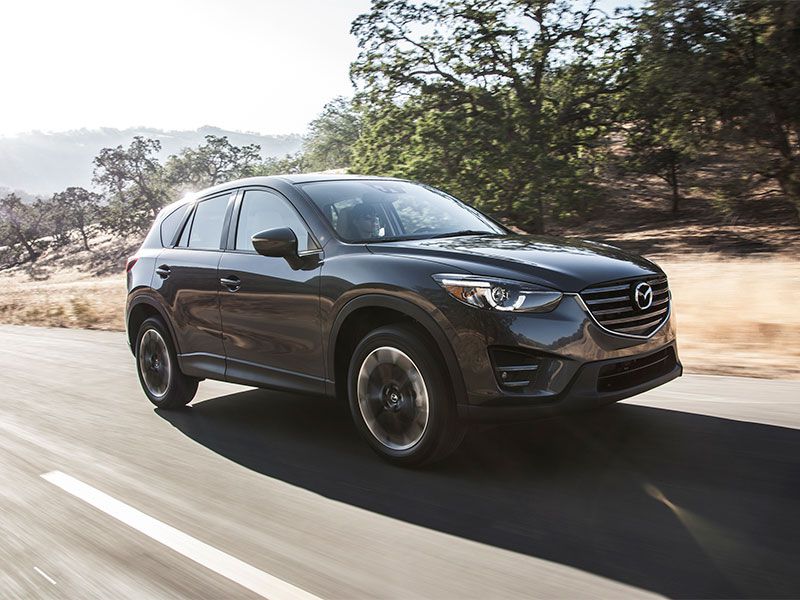
Photo by Mazda
Mitsubishi Outlander (2014-2019)
Mitsubishi’s compact Outlander will set you apart from the crowd, as there aren’t many of them around. And it’s not necessarily enjoyable to drive, as the common 166-hp 2.4-liter four-cylinder engine (paired with a CVT) offers slow and loud acceleration. Stepping up to the relatively rare 244-hp 3.0-liter V6, which comes with a six-speed automatic, does liven things up a bit.
But what the Outlander does have going for it is an available third-row seat and seven-passenger capacity — even if this third row is good only for children. Cargo space measures 34.2 cubic feet behind the second-row seat and 63.3 cubic feet behind the front seats, and the area is usefully cube-shaped. The Outlander also boasts top safety scores from the IIHS and the NHTSA and has a good reputation for reliability.

Photo by Mitsubishi
Nissan Kicks (2018-2020)
With a starting price of under $20,000 when it's brand-new, Nissan’s subcompact Kicks offers jaunty styling, a comfortable cabin, and peppy in-town performance. Ask for more than moderate acceleration, though, and the 122-hp 1.6-liter 4-cylinder and CVT drone in displeasure — especially when more people than just the driver are aboard.
Behind the rear seats, you’ll find a generous (for this class) 25.3 cubic feet of cargo space, including the useful underfloor storage bin. And it has the right look, it has the right level of utility, and it fits under our price cap when nearly new. Plus, it gets decent crash-test ratings from the NHTSA and the IIHS, and Nissan’s CPO program puts the Kicks through a 167-point inspection while providing the new owner with a seven-year/100,000-mile limited warranty. However, the Kicks is also the only vehicle we name here that doesn’t offer an all-wheel-drive option.
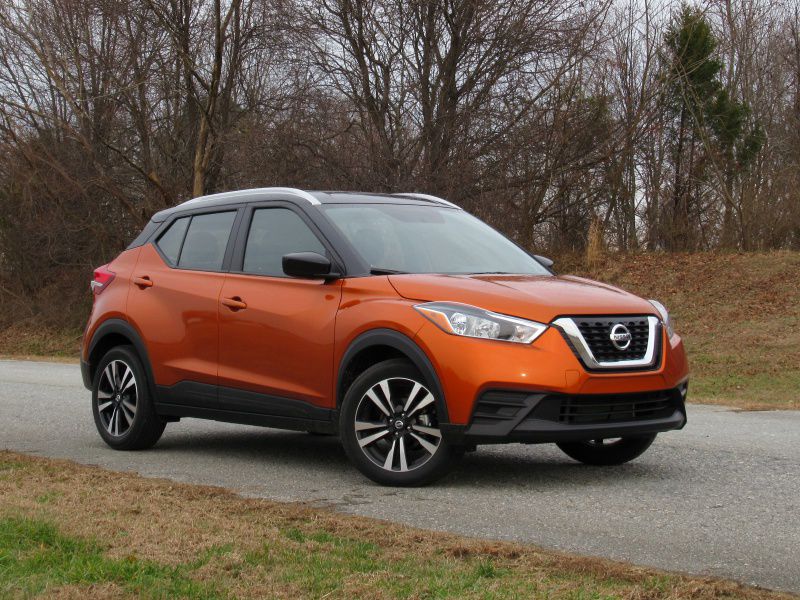
Photo by Brady Holt
Nissan Rogue Sport (2017-2019)
Back in 2017, Nissan expanded its small SUV stable with the addition of the stylish Rogue Sport, which is smaller than the more popular Rogue and is based on an overseas model called the Qashqai.
The most disappointing thing about the Rogue Sport is its mediocre 141-hp 2.0-liter four-cylinder engine and CVT. Like the Kicks, it provides adequate responsiveness around town but feels weak otherwise. Trim levels include S, SV, and SL, and you may even find a used example with features like leather, a Bose premium sound system, and a surround-view camera system coming in under our price cap. Popping the rear hatch reveals 22.9 cubic feet of cargo space (61.1 cubic feet max), and both the NHTSA and IIHS give the Rogue Sport good ratings in crash safety testing.
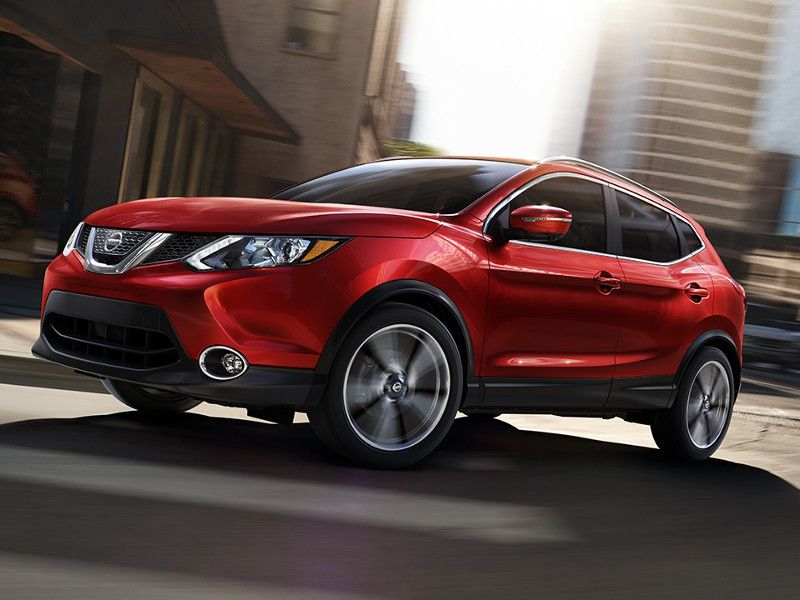
Photo by Nissan